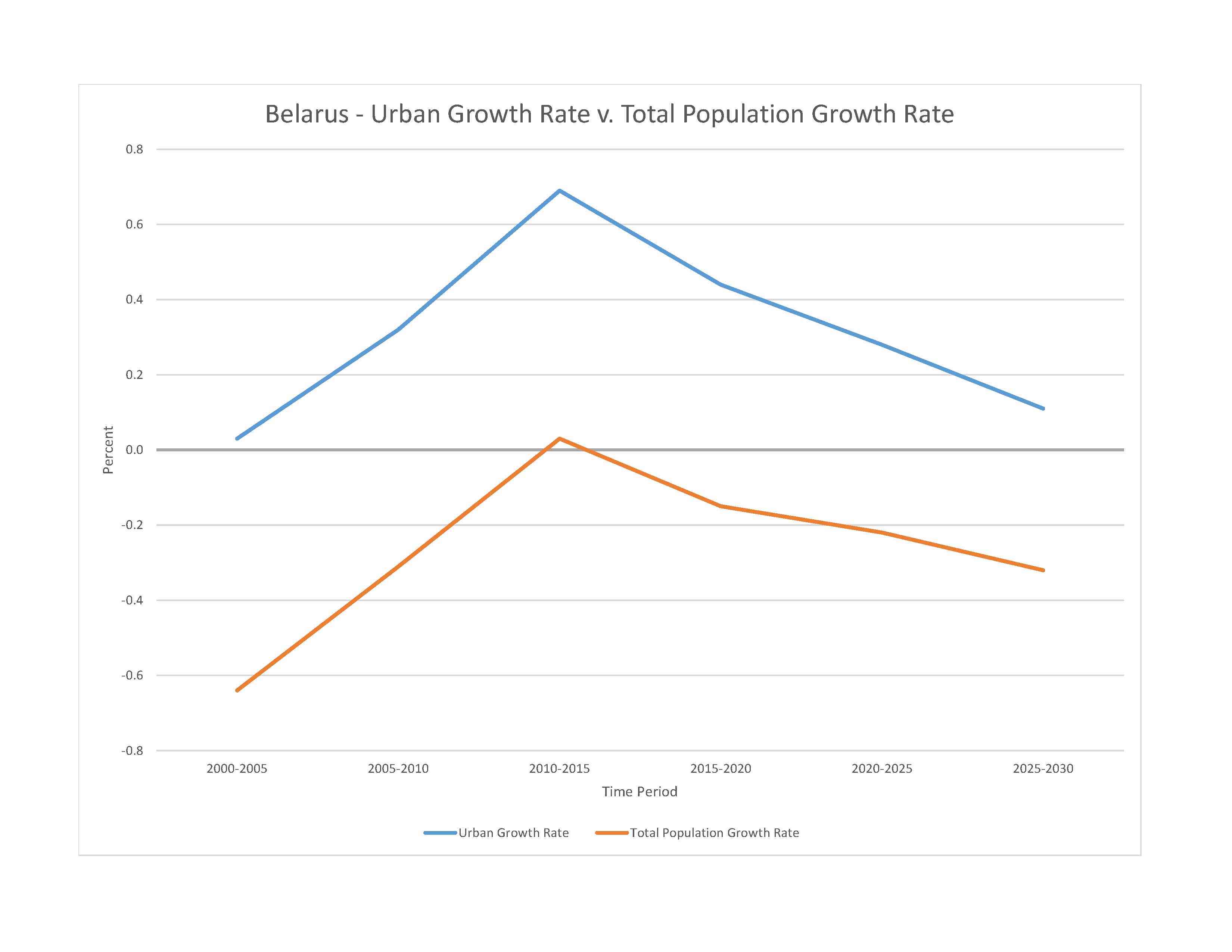
9,383,853 (2023 est.)
noun: Belarusian(s)
adjective: Belarusian
Belarusian 83.7%, Russian 8.3%, Polish 3.1%, Ukrainian 1.7%, other 2.4%, unspecified 0.9% (2009 est.)
Russian (official) 71.4%, Belarusian (official) 26%, other 0.3% (includes small Polish- and Ukrainian-speaking minorities), unspecified 2.3% (2009 est.)
major-language sample(s):
Книга фактов о мире – незаменимый источник базовой информации. (Russian)
The World Factbook, the indispensable source for basic information.
Russian audio sample:
Orthodox 48.3%, Catholic 7.1%, other 3.5%, non-believers 41.1% (2011 est.)
0-14 years: 15.83% (male 764,281/female 721,632)
15-64 years: 66.81% (male 3,055,606/female 3,213,751)
65 years and over: 17.36% (2023 est.) (male 544,270/female 1,084,313)
total dependency ratio: 50.8
youth dependency ratio: 25.4
elderly dependency ratio: 25.4
potential support ratio: 3.9 (2021 est.)
total: 41.7 years (2023 est.)
male: 39.1 years
female: 44.6 years
-0.39% (2023 est.)
8.6 births/1,000 population (2023 est.)
13.3 deaths/1,000 population (2023 est.)
0.9 migrant(s)/1,000 population (2023 est.)
a fairly even distribution throughout most of the country, with urban areas attracting larger and denser populations
urban population: 80.7% of total population (2023)
rate of urbanization: 0.28% annual rate of change (2020-25 est.)

2.057 million MINSK (capital) (2023)
at birth: 1.06 male(s)/female
0-14 years: 1.06 male(s)/female
15-64 years: 0.95 male(s)/female
65 years and over: 0.5 male(s)/female
total population: 0.88 male(s)/female (2023 est.)
26.8 years (2019 est.)
1 deaths/100,000 live births (2020 est.)
total: 2.1 deaths/1,000 live births (2023 est.)
male: 2.5 deaths/1,000 live births
female: 1.8 deaths/1,000 live births
total population: 74.6 years (2023 est.)
male: 69.6 years
female: 79.9 years
1.45 children born/woman (2023 est.)
0.7 (2023 est.)
52.6% (2019)
improved: urban: 100% of population
rural: 99.6% of population
total: 99.9% of population
unimproved: urban: 0% of population
rural: 0.4% of population
total: 0.1% of population (2020 est.)
6.4% of GDP (2020)
4.54 physicians/1,000 population (2019)
10.8 beds/1,000 population (2014)
improved: urban: 99.9% of population
rural: 98.3% of population
total: 99.5% of population
unimproved: urban: 0.1% of population
rural: 1.7% of population
total: 0.5% of population (2020 est.)
24.5% (2016)
total: 10.57 liters of pure alcohol (2019 est.)
beer: 2.26 liters of pure alcohol (2019 est.)
wine: 0.98 liters of pure alcohol (2019 est.)
spirits: 4.67 liters of pure alcohol (2019 est.)
other alcohols: 2.66 liters of pure alcohol (2019 est.)
total: 30.5% (2020 est.)
male: 47.4% (2020 est.)
female: 13.5% (2020 est.)
N/A
66.6% (2023 est.)
women married by age 15: 0.1%
women married by age 18: 4.7%
men married by age 18: 1.6% (2019 est.)
4.7% of GDP (2021 est.)
definition: age 15 and over can read and write
total population: 99.9%
male: 99.9%
female: 99.9% (2019)
total: 15 years
male: 15 years
female: 15 years (2021)
NOTE: The information regarding Belarus on this page is re-published from the 2024 World Fact Book of the United States Central Intelligence Agency and other sources. No claims are made regarding the accuracy of Belarus 2024 information contained here. All suggestions for corrections of any errors about Belarus 2024 should be addressed to the CIA or the source cited on each page.
This page was last modified 04 May 24, Copyright © 2024 ITA all rights reserved.